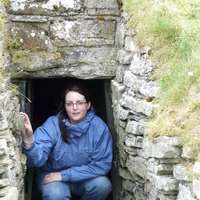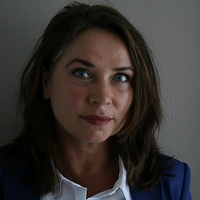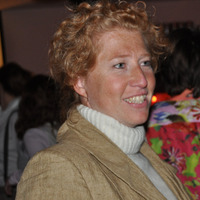
Andris Sne
Related Authors
Katheriin Liibert
The University of Manchester
Kerri Cleary
University College Dublin
Marjo Schlaman
Independent Researcher
Rocío Varela-Pousa
CSIC (Consejo Superior de Investigaciones Científicas-Spanish National Research Council)
Tine Schenck
University of Exeter
Ain Mäesalu
University of Tartu
Cláudia Costa
Universidade do Algarve
Karin Scharringhausen
University of Amsterdam
Heleen van Londen
University of Amsterdam








Uploads
Papers by Andris Sne
Books by Andris Sne
Employment. Across the 21 participating states, it is calculated that a total of over €1 billion is spent on professional archaeology every year, with the majority of that expenditure being on the salary costs of the estimated 24,740 people who work as archaeologists in these countries. This group of professionals represents 0.006% of the combined total workforces of those states. In many states, the absolute numbers employed in archaeology has fallen significantly over the previous six years. It is estimated that approximately 33,000 archaeologists now work across Europe as a whole.
Growth of the sector. Across Europe, organisations employing archaeologists have typically become smaller over the five years prior to this project, and employers are very cautious about predicting future growth.
Nature of the workforce. A slight majority (50.3% to 49.7%) of archaeologists are women. The proportion of women in the workforce has increased over the six years since 2006-08 from 45.9%. On average, European archaeologists are 40 years old. Very few European archaeologists are disabled – 1.1% of the total number of workers for whom data were available, a reduction from 1.5% in 2006-08.
Countries of Origin. 94% of archaeologists work in their own countries of origin, 5% are from other EU states and 1% from elsewhere in the world. Overall, this shows a slight decline in sectoral transnational mobility, as in 2006-08 more archaeologists were working away from their countries of origin.
Qualifications. In every participating state, it is normal for people working in archaeology to hold a degree – on aggregate, 94% of European archaeologists are graduates and the majority (69%) are postgraduates. 90% of archaeologists gained their highest qualifications in the countries in which they now work, with 9% obtaining those qualifications elsewhere in Europe (and 1% elsewhere in the world). When compared with the figures from 2006-08, this shows that archaeologists are increasingly educationally mobile.
Salaries. In twelve of the 21 participating states, archaeologists were paid less than the national average for all workers. An average figure of €24,901 was calculated as the mean salary earned by an archaeologist, but this is relatively meaningless as average salaries vary enormously between counties, with Danish archaeologists earning on average nine times the amount earned by their peers in Bosnia and Herzegovina.
Nature of the work. 78% of the archaeologists for whom data were available worked full-time and 22% part-time. This is a marked change from 2006-08, when the percentages were 86% full-time and 14% part-time. 63% of archaeologists held permanent contracts at the time of the research, while the remaining 37% of workers had time-limited contracts.
Structures. As was identified in the predecessor project in 2006-08, archaeological practice in the participating states is organised on different models, with varying levels of commercial activity balanced against state agency engagement. This is often linked to the funding basis of archaeological practice (variation both on the basis of funding from the state or from private sector industries, and on whether delivery is achieved by the state or by the private sector). Different states define who can be considered to be an archaeologist in different ways. Vocational education and training (VET) in the sector is almost universally delivered by universities through academic degree programmes.
Skills and Training Needs. Issues relating to specific training needs were assessed in each participating country, but, as in 2006-08, because of the variety of ways in which these questions were asked by the project partners (in order to accommodate the differing structures and approaches to archaeological work in each participating state), the information obtained cannot be usefully compared transnationally.
Trends and developments. In comparison with the predecessor work undertaken in 2006-08, the main ways that the sector has changed are that the number of jobs has decreased and the proportion of women working in the sector has increased. Furthermore, jobs are more likely to be part-time and for shorter contractual periods; archaeologists are more highly qualified, but are less well-paid in comparison with other sectors.
Employment. Across the 21 participating states, it is calculated that a total of over €1 billion is spent on professional archaeology every year, with the majority of that expenditure being on the salary costs of the estimated 24,740 people who work as archaeologists in these countries. This group of professionals represents 0.006% of the combined total workforces of those states. In many states, the absolute numbers employed in archaeology has fallen significantly over the previous six years. It is estimated that approximately 33,000 archaeologists now work across Europe as a whole.
Growth of the sector. Across Europe, organisations employing archaeologists have typically become smaller over the five years prior to this project, and employers are very cautious about predicting future growth.
Nature of the workforce. A slight majority (50.3% to 49.7%) of archaeologists are women. The proportion of women in the workforce has increased over the six years since 2006-08 from 45.9%. On average, European archaeologists are 40 years old. Very few European archaeologists are disabled – 1.1% of the total number of workers for whom data were available, a reduction from 1.5% in 2006-08.
Countries of Origin. 94% of archaeologists work in their own countries of origin, 5% are from other EU states and 1% from elsewhere in the world. Overall, this shows a slight decline in sectoral transnational mobility, as in 2006-08 more archaeologists were working away from their countries of origin.
Qualifications. In every participating state, it is normal for people working in archaeology to hold a degree – on aggregate, 94% of European archaeologists are graduates and the majority (69%) are postgraduates. 90% of archaeologists gained their highest qualifications in the countries in which they now work, with 9% obtaining those qualifications elsewhere in Europe (and 1% elsewhere in the world). When compared with the figures from 2006-08, this shows that archaeologists are increasingly educationally mobile.
Salaries. In twelve of the 21 participating states, archaeologists were paid less than the national average for all workers. An average figure of €24,901 was calculated as the mean salary earned by an archaeologist, but this is relatively meaningless as average salaries vary enormously between counties, with Danish archaeologists earning on average nine times the amount earned by their peers in Bosnia and Herzegovina.
Nature of the work. 78% of the archaeologists for whom data were available worked full-time and 22% part-time. This is a marked change from 2006-08, when the percentages were 86% full-time and 14% part-time. 63% of archaeologists held permanent contracts at the time of the research, while the remaining 37% of workers had time-limited contracts.
Structures. As was identified in the predecessor project in 2006-08, archaeological practice in the participating states is organised on different models, with varying levels of commercial activity balanced against state agency engagement. This is often linked to the funding basis of archaeological practice (variation both on the basis of funding from the state or from private sector industries, and on whether delivery is achieved by the state or by the private sector). Different states define who can be considered to be an archaeologist in different ways. Vocational education and training (VET) in the sector is almost universally delivered by universities through academic degree programmes.
Skills and Training Needs. Issues relating to specific training needs were assessed in each participating country, but, as in 2006-08, because of the variety of ways in which these questions were asked by the project partners (in order to accommodate the differing structures and approaches to archaeological work in each participating state), the information obtained cannot be usefully compared transnationally.
Trends and developments. In comparison with the predecessor work undertaken in 2006-08, the main ways that the sector has changed are that the number of jobs has decreased and the proportion of women working in the sector has increased. Furthermore, jobs are more likely to be part-time and for shorter contractual periods; archaeologists are more highly qualified, but are less well-paid in comparison with other sectors.